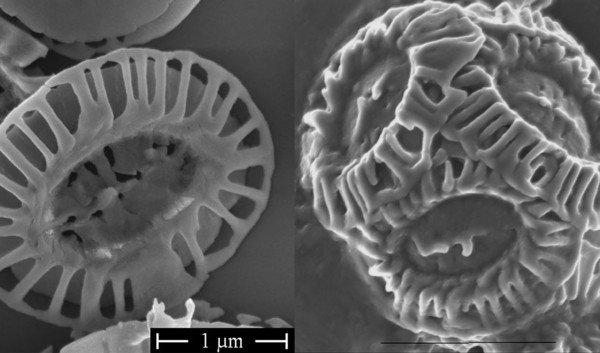Different types of molluscs build shells of diverse shapes and sizes, but surprisingly the mineral involved is in most cases calcium carbonate (CaCO
3) mainly in the form of calcite and/or aragonite. When both polymorphs co-exist within the shell, they are always spatially separated, in different parts of the shell. The aim of our work was the investigation of inorganic-inorganic and organic-inorganic interfaces and contacts in abalone shell using a combination of bright field (BF) and annular dark field scanning transmission electron microscopy (STEM) imaging in conjunction with electron energy-loss spectroscopy.
[more]


